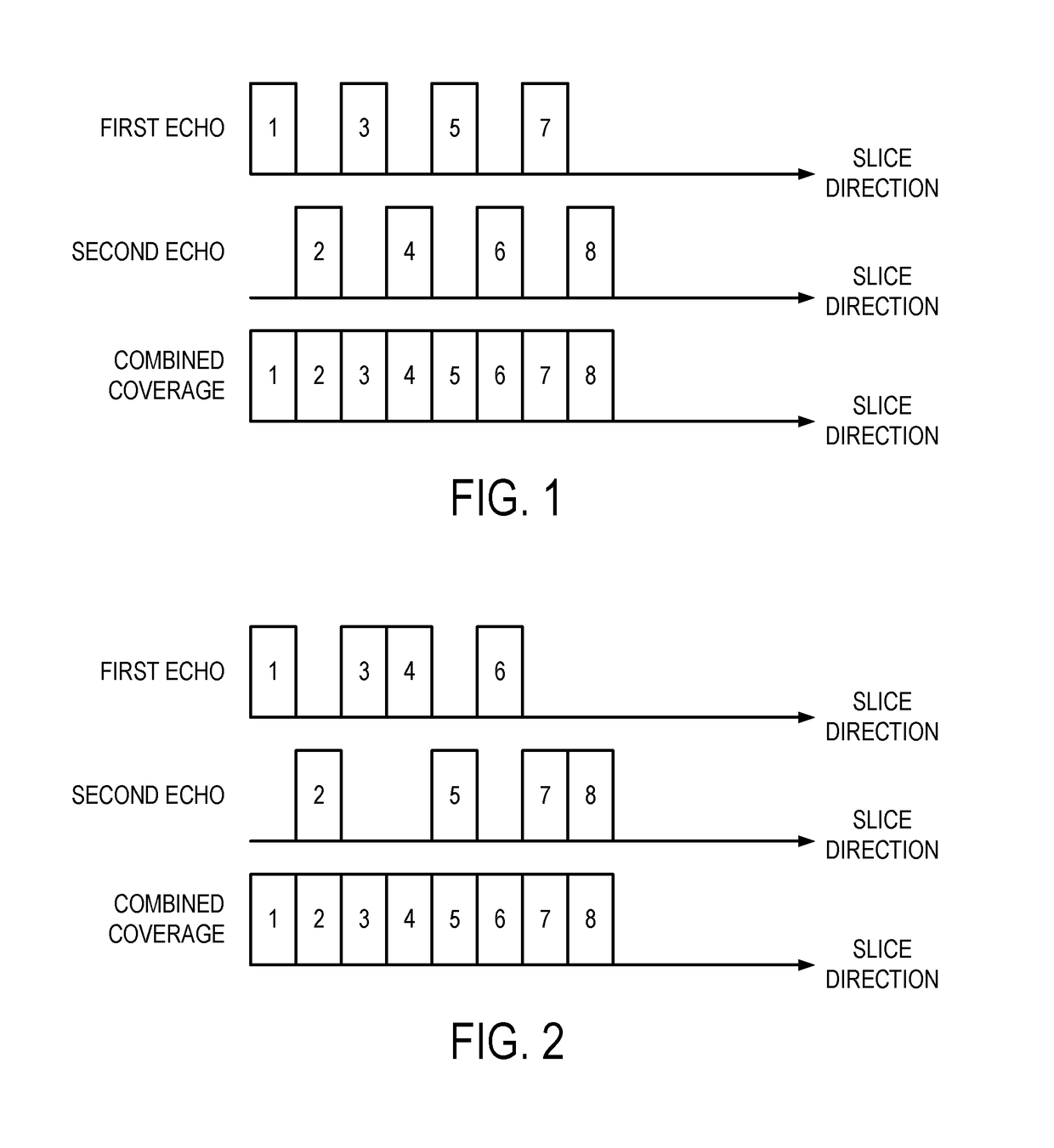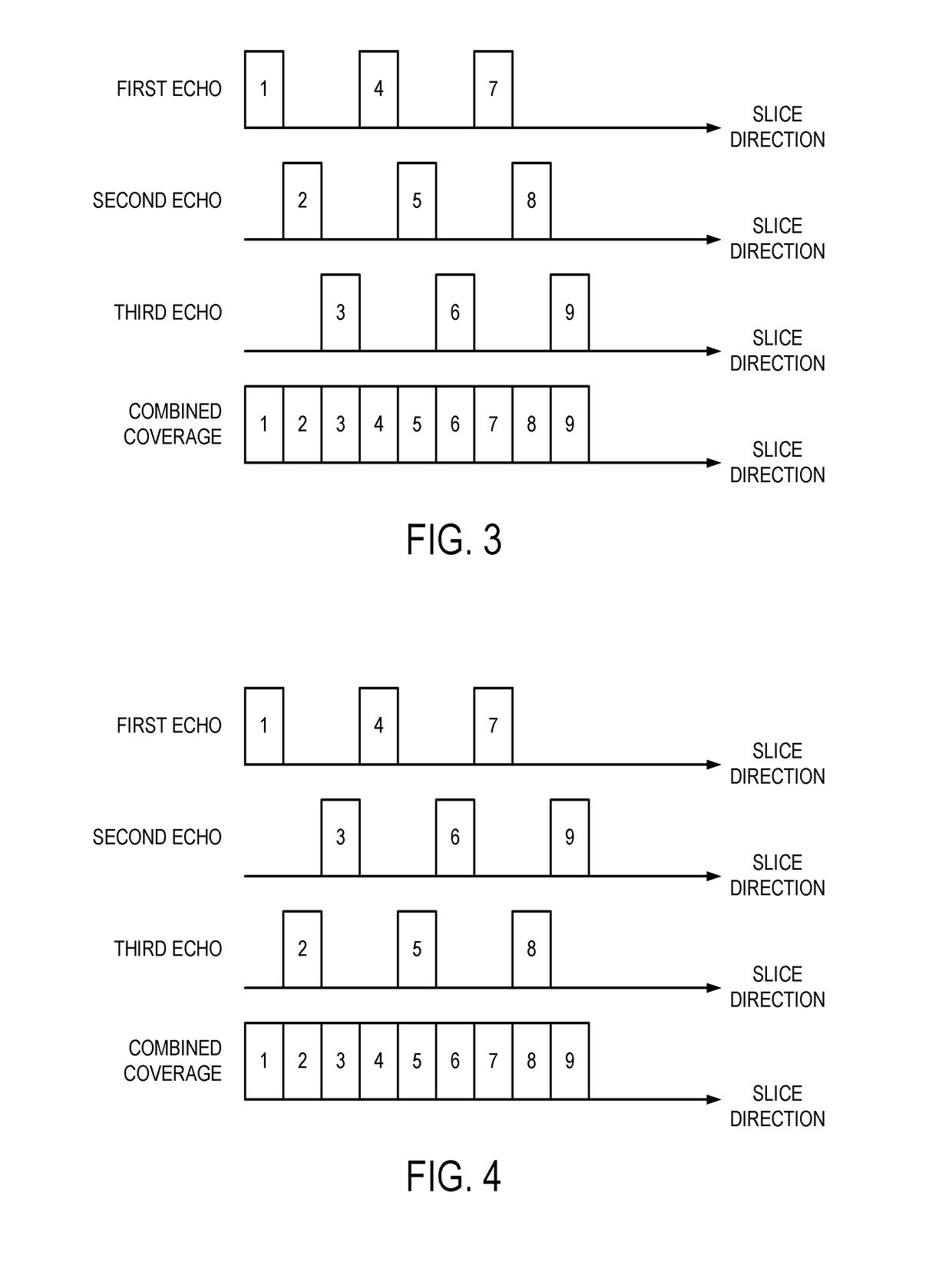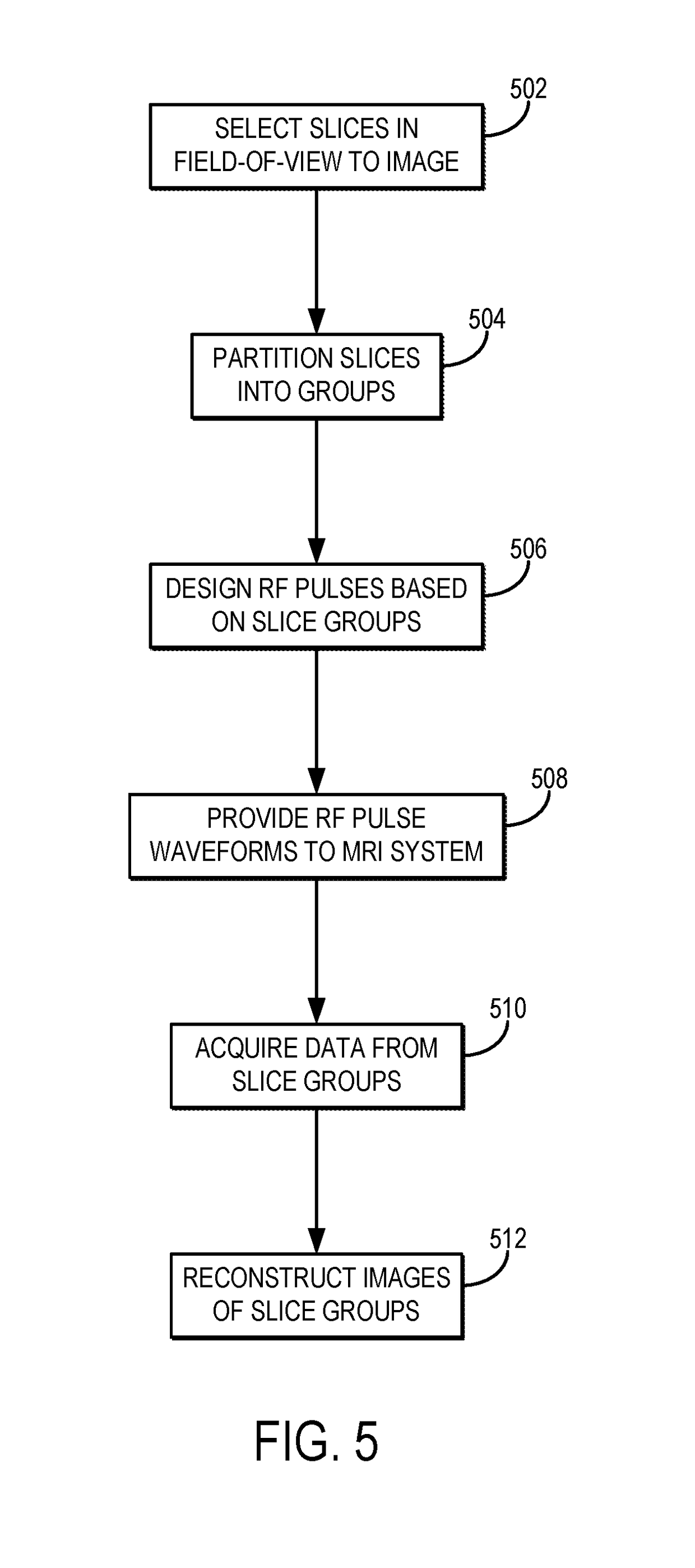Method for simultaneous time-interleaved multislice magnetic resonance imaging
a magnetic resonance imaging and multi-slice technology, applied in the direction of magnetic measurement, instruments, measurements using nmr, etc., can solve the problems of reducing the parallel imaging capability in the slice direction, requiring a long acquisition time, and requiring conventional 3d-mprage acquisition
- Summary
- Abstract
- Description
- Claims
- Application Information
AI Technical Summary
Benefits of technology
Problems solved by technology
Method used
Image
Examples
Embodiment Construction
[0019]Described here are methods for reducing scan time in magnetic resonance imaging (“MRI”), particularly when imaging three-dimensional image volumes, using a simultaneous time-interleaved multislice (“STIMS”) acquisition. In the methods described in the present disclosure, the unused time in each repetition time (“TR”) period is exploited to provide an additional reduction in encoding time for a three-dimensional acquisition (e.g., a 3D whole brain coverage).
[0020]The time interleaving techniques described in the present disclosure are combined with a simultaneous multislice (“SMS”) acquisition to achieve significant acceleration of a 3D gradient-echo (“3D-GRE”), 3D magnetization prepared rapid gradient-echo (“3D-MPRAGE”) acquisitions, and other acquisitions where multiple RF pulses are used for each slice acquisition, including spin-echo-based acquisitions, such as a turbo spin-echo (“TSE”) sequence. By exploiting the unused time in 3D-GRE imaging where a long TE is typically r...
PUM
 Login to View More
Login to View More Abstract
Description
Claims
Application Information
 Login to View More
Login to View More - R&D
- Intellectual Property
- Life Sciences
- Materials
- Tech Scout
- Unparalleled Data Quality
- Higher Quality Content
- 60% Fewer Hallucinations
Browse by: Latest US Patents, China's latest patents, Technical Efficacy Thesaurus, Application Domain, Technology Topic, Popular Technical Reports.
© 2025 PatSnap. All rights reserved.Legal|Privacy policy|Modern Slavery Act Transparency Statement|Sitemap|About US| Contact US: help@patsnap.com



